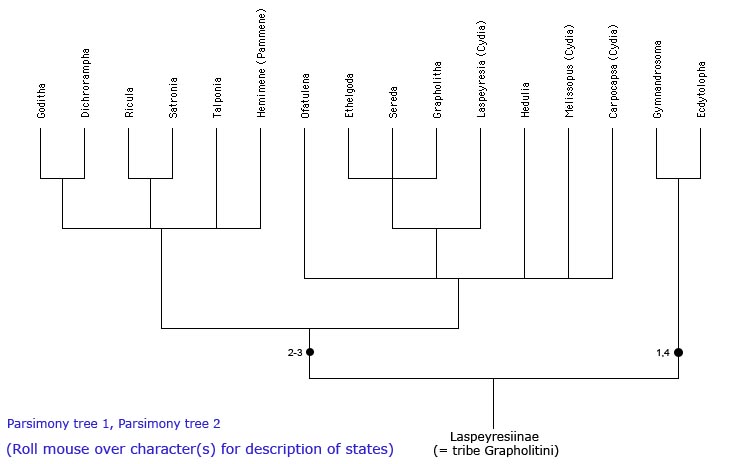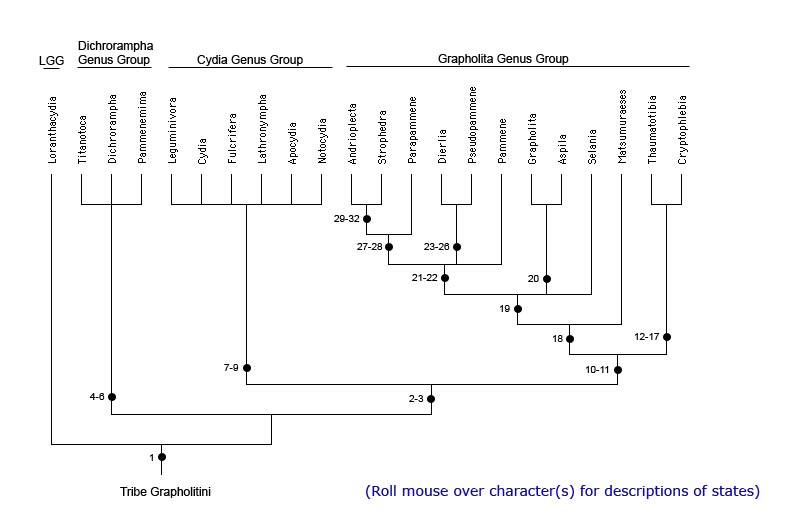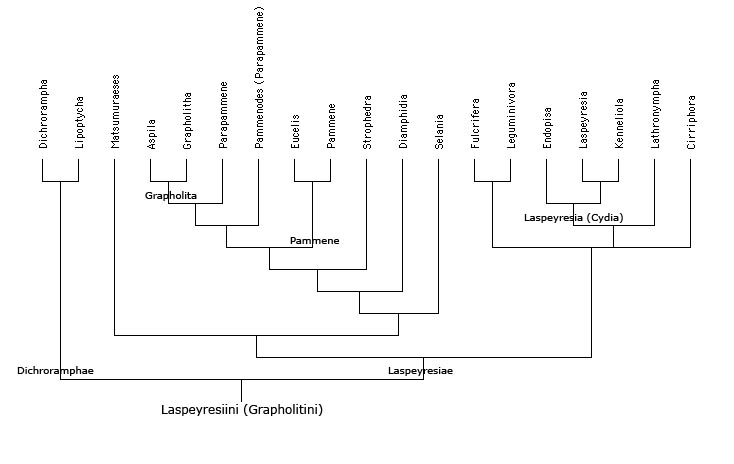Phylogeny of North American Grapholitini by Heinrich (1926)

Notes: Laspeyresia, Melissopus, and Carpocapsa have been synonymized as Cydia since Heinrich's publication. In Heinrich's original phylogeny, Ethelgoda, Sereda, and Grapholita directly derive from Laspeyresia (rather than Laspeyresia being sister). Likewise, Satronia derives from Ricula. Heinrich's phylogeny is not a parsimony-based phylogeny based on the characters listed in the "Comparative table of structural characters: Laspeyresiinae)." Only four characters (1-4 above) have any phylogenetic signal. A heuristic parsimony analysis based on these characters (and synonymizing the Cydia genera) results in two most parsimonious trees (roll over text above to view, or click to open in a new window).
For exceptions and further explanations of characters and states see:
Heinrich C. 1926. Revision of the North American moths of the subfamilies Laspeyresiinae and Olethreutinae.
US National Museum, Bulletin 132: 1-75 |



